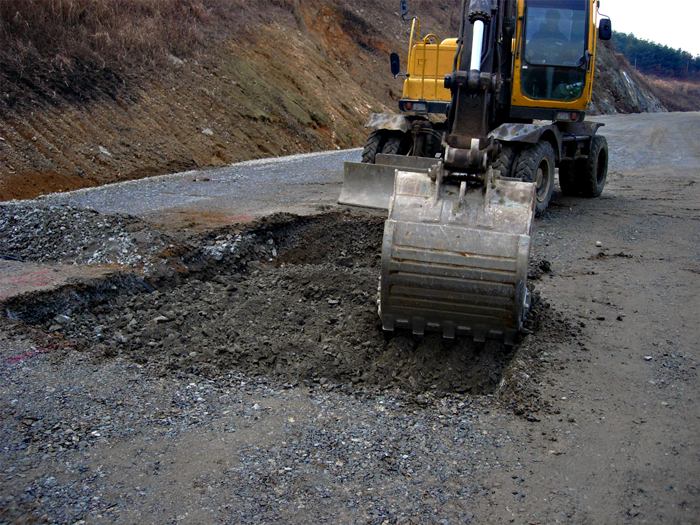
Korea Expressway Corporation (KEC) was established in 1969 to construct and manage expressways throughout South Korea. KEC’s goal has been to increase the length of their expressways so that all residents throughout the country can reach an expressway within 30 minutes. The attainment of this goal is affected by two significant financial considerations: the cost to build new roads and the cost to maintain the surface of existing roads.
KEC repairs and repaves damaged road surfaces as part of its commitment to managing and maintaining its expressways. To reduce the cost related to repairing and repaving, KEC developed a systematic maintenance and management strategy that includes the conversion from post-maintenance management to preventive maintenance management.
As part of its preventive maintenance management, KEC focused on preventing paved roads from freezing during the winter. The road moisture from freezing conditions, as well as the temperature difference during the change from the cold winter season to the warm spring season, are especially harmful to roads. These seasonal factors can significantly increase the cost for repairs to, and repavement of, road surfaces.
To find a way to prevent expressways from freezing and to minimize winter’s effect on road surfaces, KEC worked with the Ministry of Land, Transport, and Maritime Affairs (MLTM); Incheon National University; and the Korea Institute of Construction Technology (KICT). Their combined efforts and support resulted in KICT’s development of an antifreezing layer that could be embedded under the road.
The next step was to test the antifreezing layer on paved roads throughout South Korea. Forty-five testing sites were selected to be supplied with a field measurement system. B&P International provided the Campbell Scientific measurement equipment for all of the testing sites. The multitude of equipment included 45 CR1000 dataloggers, 45 AM16/32B relay multiplexers, and 615 CS616 water-content reflectometers. Thermocouples, linear variable differential transformers (LVDTs), and load cells were later added to each station.
At each test site, B&P laid down the antifreezing layer and equipped it with a data logger and sensors. The layer was then paved over with asphalt. For three years, the sensors at the test sites were monitored using CR1000s connected to a central PC running Campbell Scientific’s LoggerNet with RTMC (real-time monitoring and control) software. The Campbell monitoring system enabled KEC to accomplish two objectives: to continuously monitor the 45 test sites; and to assess, over time, the effectiveness of the antifreezing layer in preventing winter damage to KEC’s expressways.
Zusammenfassung Projekt
Anwendung
Measuring water content in road bed to research anti-freezing methodsStandort
South KoreaVerwendete Produkte
CS616 AM16/32B PS100 SC105 LoggerNet CR1000Autoren
K. H. Hong, B&P International Co., Ltd.Beteiligte Organisationen
Korea Expressway Corporation; Incheon National University; Korea Institute of Construction Technology; Ministry of Land, Transport, and Maritime AffairsGemessene Parameter
Volumetric water content, temperatureTeilnehmender Konsultant/ Integrator
B&P Instrument Co., Ltd.pdf anzeigen